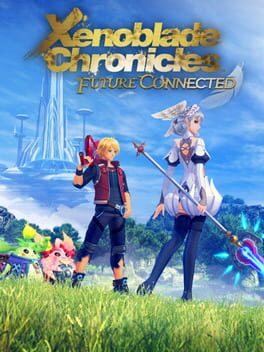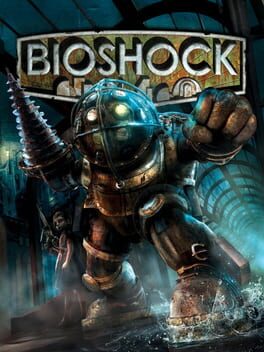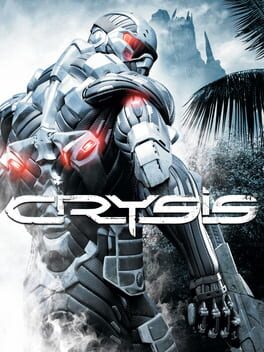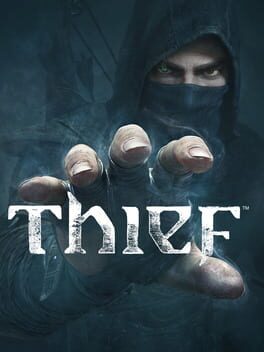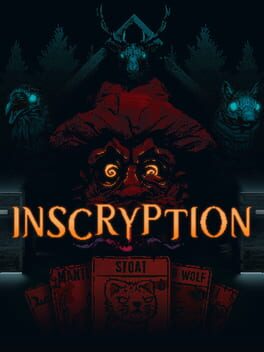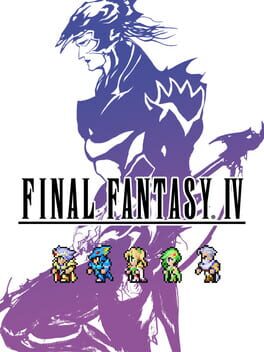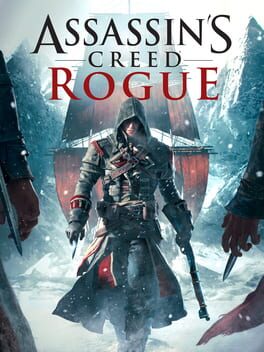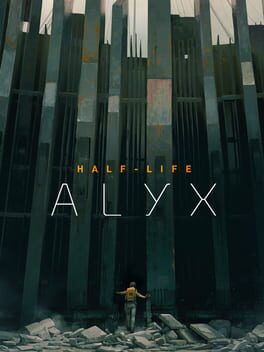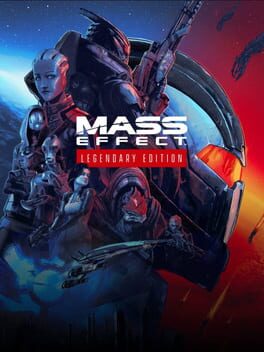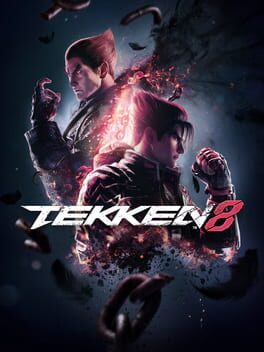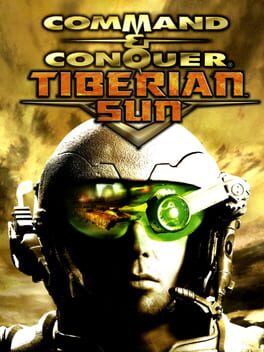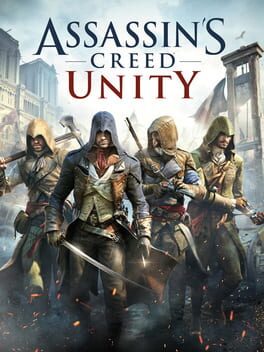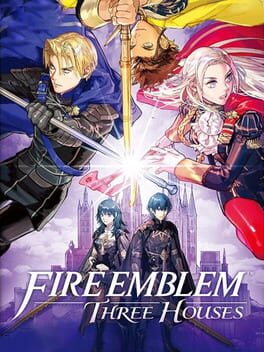helicopterhero
BACKER
160 reviews liked by helicopterhero
It has a character named Kino...
Future Connected takes place one year after the events of Xenoblade Chronicles and takes Shulk and Melia to an unexplored region of the Bionis, where they stumble upon two stowaways who help them against the seemingly untouchable Fog King terrorizing the local people. Yes, this premise is pretty basic, but it's more of an expansion to round off Melia's character arc than an actual story expansion.
The highlight and key aspect of Future Connected is the exploration of Bionis' Shoulder, a previously unreleased area that has been planned ever since the original release of Xenoblade Chronicles on the Wii, but never made the cut. Now it has been repurposed as the central setpiece of the epilogue and I'm quite glad for this decision, as it's easily one of my favorite areas in the game now and I had a lot of fun exploring it. There are many great views and it looks particularly cool during thunderstorms (even better when there's a cutscene playing). Fairly early on you're introduced to the Ponspectors, a group of archaeologist Nopon, who have lost their boss and now are scattered all across the Shoulder, where you can pick them up (most of the times you need to do a short quest beforehand) and add them to your own personal Nopon army. This literal army of furball companions not only deals passive damage during combat, but also replaces the chain attacks with some QTE combos, which can be upgraded by adding more Ponspectors to your squad. They're also masters of taking a toll on the framerate, as things can get seriously laggy when there's a dozen Nopon hammering away on a bunch of enemies during a thunderstorm while several other flashy animations are playing. Despite this, I thought the Ponspectors were a fun change of pace in terms of combat usage, but there was something else I disliked instead in terms of combat, and that's the removal of vision attacks. This sounds insane at first, considering vision attacks only make your life harder, but the thing is that they're still in the game, you're just not informed when the enemy will hit you with them anymore. Always a pleasure to see a boss hit you with "Attack VIII" without warning just to survive with a mere sliver of health, so the existence of the Shield and Impulse Monado Art hardly justify themselves in Future Connected, as they are practically useless - you're better off using the Armor Art instead.
I don't think the story present here is that bad, just considerably weaker than the main narrative, which is to be expected from a free expansion that released 10 years after the source material. For me the main issues are the underwhelming villains (the fate of one major villain here is literally revealed in a sidequest) and the lack of any real stakes here, so the true highlight are the character interactions instead. The heart-to-heart mechanic from the main game has been rebranded to "quiet moments" and is now available anytime after certain points in the story have been passed, as long as the time is right and the party members you need for the support are in your current party setup. They're also fully voiced and do not require any previous affinity building between characters, which is something that would be very cool to see in future Xenoblade games (or atleast Xenoblade 3, considering 2 released before Future Connected), as voice acting alone in these moments can make them a lot more impactful and memorable already. While Kino's and Nene's supports help characterize Riki further, Melia's are particularly interesting as she as a person had to undergo significant changes after the events of the main storyline. Shulk takes the backseat here and is more of a mentor for the Nopon kids, which is sweet in its own way.
To wrap it up, it's a nice little bonus campaign after the grand scope of Xenoblade's main story and I'd recommend it to anyone who just wants more of the same. As far as I know, Future Connected is ultimately skippable, but there's no harm in giving it a try atleast - else you're missing out on some fantastic tracks like the Bionis Shoulder battle theme or the Fogbeasts encounter theme.
Future Connected takes place one year after the events of Xenoblade Chronicles and takes Shulk and Melia to an unexplored region of the Bionis, where they stumble upon two stowaways who help them against the seemingly untouchable Fog King terrorizing the local people. Yes, this premise is pretty basic, but it's more of an expansion to round off Melia's character arc than an actual story expansion.
The highlight and key aspect of Future Connected is the exploration of Bionis' Shoulder, a previously unreleased area that has been planned ever since the original release of Xenoblade Chronicles on the Wii, but never made the cut. Now it has been repurposed as the central setpiece of the epilogue and I'm quite glad for this decision, as it's easily one of my favorite areas in the game now and I had a lot of fun exploring it. There are many great views and it looks particularly cool during thunderstorms (even better when there's a cutscene playing). Fairly early on you're introduced to the Ponspectors, a group of archaeologist Nopon, who have lost their boss and now are scattered all across the Shoulder, where you can pick them up (most of the times you need to do a short quest beforehand) and add them to your own personal Nopon army. This literal army of furball companions not only deals passive damage during combat, but also replaces the chain attacks with some QTE combos, which can be upgraded by adding more Ponspectors to your squad. They're also masters of taking a toll on the framerate, as things can get seriously laggy when there's a dozen Nopon hammering away on a bunch of enemies during a thunderstorm while several other flashy animations are playing. Despite this, I thought the Ponspectors were a fun change of pace in terms of combat usage, but there was something else I disliked instead in terms of combat, and that's the removal of vision attacks. This sounds insane at first, considering vision attacks only make your life harder, but the thing is that they're still in the game, you're just not informed when the enemy will hit you with them anymore. Always a pleasure to see a boss hit you with "Attack VIII" without warning just to survive with a mere sliver of health, so the existence of the Shield and Impulse Monado Art hardly justify themselves in Future Connected, as they are practically useless - you're better off using the Armor Art instead.
I don't think the story present here is that bad, just considerably weaker than the main narrative, which is to be expected from a free expansion that released 10 years after the source material. For me the main issues are the underwhelming villains (the fate of one major villain here is literally revealed in a sidequest) and the lack of any real stakes here, so the true highlight are the character interactions instead. The heart-to-heart mechanic from the main game has been rebranded to "quiet moments" and is now available anytime after certain points in the story have been passed, as long as the time is right and the party members you need for the support are in your current party setup. They're also fully voiced and do not require any previous affinity building between characters, which is something that would be very cool to see in future Xenoblade games (or atleast Xenoblade 3, considering 2 released before Future Connected), as voice acting alone in these moments can make them a lot more impactful and memorable already. While Kino's and Nene's supports help characterize Riki further, Melia's are particularly interesting as she as a person had to undergo significant changes after the events of the main storyline. Shulk takes the backseat here and is more of a mentor for the Nopon kids, which is sweet in its own way.
To wrap it up, it's a nice little bonus campaign after the grand scope of Xenoblade's main story and I'd recommend it to anyone who just wants more of the same. As far as I know, Future Connected is ultimately skippable, but there's no harm in giving it a try atleast - else you're missing out on some fantastic tracks like the Bionis Shoulder battle theme or the Fogbeasts encounter theme.
Mars After Midnight
2024
Mars After Midnight is a game I have been anticipating to play for around two years now, more specifically after completing another Lucas Pope- and now one of my favorite games ever made Return of the Obra Dinn. While not the only reason, the announcement of Mars After Midnight as a Playdate exclusive of all things, was a big contributor to me buying the console and I don’t think I’m alone with that, as their tweets about the game are noticeably more popular and comments about it riddle the sections of tweets that don’t even mention it.
After the announcement of the release date, around two weeks ago, even after playing through this game, it still doesn’t feel real to finally own it after this long time, so I probably don’t have to describe how high my expectations for this game were.
Did it meet said expectations?
Yes!
Did it exceed them?
No, but that should never be a standard to hold anything on now, should it?
Mars After Midnight is another entry in Lucas Pope’s paperwork series and is (to my knowledge) the first one based around a job that has yet to exist.
You will see yourself as the owner of a Martian-help-center and work at the reception while finding out which Martian, Robot or even Human needs help. The ways of going about this are relatively simple. Some you can deduce, for some you need to use a device and for others both, just know that there are always 6 Martians that need any given kind of help.
After letting someone in, they may eat some refreshments and may leave a mess, which you may have to clean up for the next customer to dabble in said refreshments. After the session is done you get two Mars-Dollars for every right customer. These Mars-Dollars can then be used to advertise, buy food etc. for the next Martians. They can also be spend on items or new treatments, sold by a merchant that shows up every day.
Planning out your next day is always fun, with you looking at the map of your colony, with the living quarters of the six Martians you want to attend being highlighted and picking out where to advertise and which food is most popular at any given place, every day. The only issue I had with this is that it disincentivizes experimenting with new foods, as the cleaning-up process, the only one with a timer, will be different with every item of food. Furthermore the first item of food doesn’t only cover a lot of area, but becomes the easiest to clean up with your dependency on it in the early game.
I’m conflicted on the amount of Martians you have to get right, as 6 is pretty much the perfect amount, if you fail, as you will have more than enough time to deduce what you did wrong, but it does get a bit repetitive if you instantly know what to do and now have to go through a random amount of visitors to pick out the six obvious candidates. This small issue gets heightened by the fact that this game is really easy, and I only had to redo two jobs, because I forgot what reading was; so the fact that six is the perfect amount in those cases didn’t really come up. Even if you fail the punishments are relatively insignificant as you get paid more than enough, for those 2 Mars-Dollars not to matter, if you only miss a few.
As I already mentioned, there aren’t that many ways of finding out which Martian needs a given treatment, but don’t worry, there is enough variation in these ways of deduction for this to never get repetitive, over it’s relatively short runtime of ~3 hours. The gadgets especially, even with them being simple in concept, were fun to mess around with, just to see the reactions of the Martians you try them on, which is even incentivized by the reactions acting as a collectible, with new phrases being registered in the blab-o-dex, a sort of encyclopedia of the Martian language.
Now I’ve tried to stay spoiler-free up until now, but there is one small gripe I had with the game which I cannot talk about without spoiling something that happens at around 2/3rds through the game, so I will write my conclusion here while everything after may be a spoiler.
Mars After Midnight is probably not worth you buying a Playdate, solely to play it, for, even with it being a quality, although simple game. If you are on the fence of buying one anyways, with this game just being a big contributor to why, then there probably is no better time than now, as they have now ended the preorder structure, with me waiting for around a year for mine to arrive in September and there currently being a sale on their online storefront going on; some of my recommendations of other games on Playdate to keep an eye on are Resonant Tale and Sparrow Solitaire
The spoiler(-y) section will begin here.
As I already mentioned something happens in Mars After Midnight at around the 2-hour mark, being that you will leave your colony and go to the people’s colony, which primarily serves as a way for there to be more visual variety. My problem with this comes from the brevity of time you spend there, as the previous colony had 78 Martians to provide help for, while this one has only 24, which also means it is way smaller, which then means even less variety in the food items to use and such. I also found the ways to deduce way easier in this section than some of the more difficult ones of the first colony.
After the announcement of the release date, around two weeks ago, even after playing through this game, it still doesn’t feel real to finally own it after this long time, so I probably don’t have to describe how high my expectations for this game were.
Did it meet said expectations?
Yes!
Did it exceed them?
No, but that should never be a standard to hold anything on now, should it?
Mars After Midnight is another entry in Lucas Pope’s paperwork series and is (to my knowledge) the first one based around a job that has yet to exist.
You will see yourself as the owner of a Martian-help-center and work at the reception while finding out which Martian, Robot or even Human needs help. The ways of going about this are relatively simple. Some you can deduce, for some you need to use a device and for others both, just know that there are always 6 Martians that need any given kind of help.
After letting someone in, they may eat some refreshments and may leave a mess, which you may have to clean up for the next customer to dabble in said refreshments. After the session is done you get two Mars-Dollars for every right customer. These Mars-Dollars can then be used to advertise, buy food etc. for the next Martians. They can also be spend on items or new treatments, sold by a merchant that shows up every day.
Planning out your next day is always fun, with you looking at the map of your colony, with the living quarters of the six Martians you want to attend being highlighted and picking out where to advertise and which food is most popular at any given place, every day. The only issue I had with this is that it disincentivizes experimenting with new foods, as the cleaning-up process, the only one with a timer, will be different with every item of food. Furthermore the first item of food doesn’t only cover a lot of area, but becomes the easiest to clean up with your dependency on it in the early game.
I’m conflicted on the amount of Martians you have to get right, as 6 is pretty much the perfect amount, if you fail, as you will have more than enough time to deduce what you did wrong, but it does get a bit repetitive if you instantly know what to do and now have to go through a random amount of visitors to pick out the six obvious candidates. This small issue gets heightened by the fact that this game is really easy, and I only had to redo two jobs, because I forgot what reading was; so the fact that six is the perfect amount in those cases didn’t really come up. Even if you fail the punishments are relatively insignificant as you get paid more than enough, for those 2 Mars-Dollars not to matter, if you only miss a few.
As I already mentioned, there aren’t that many ways of finding out which Martian needs a given treatment, but don’t worry, there is enough variation in these ways of deduction for this to never get repetitive, over it’s relatively short runtime of ~3 hours. The gadgets especially, even with them being simple in concept, were fun to mess around with, just to see the reactions of the Martians you try them on, which is even incentivized by the reactions acting as a collectible, with new phrases being registered in the blab-o-dex, a sort of encyclopedia of the Martian language.
Now I’ve tried to stay spoiler-free up until now, but there is one small gripe I had with the game which I cannot talk about without spoiling something that happens at around 2/3rds through the game, so I will write my conclusion here while everything after may be a spoiler.
Mars After Midnight is probably not worth you buying a Playdate, solely to play it, for, even with it being a quality, although simple game. If you are on the fence of buying one anyways, with this game just being a big contributor to why, then there probably is no better time than now, as they have now ended the preorder structure, with me waiting for around a year for mine to arrive in September and there currently being a sale on their online storefront going on; some of my recommendations of other games on Playdate to keep an eye on are Resonant Tale and Sparrow Solitaire
The spoiler(-y) section will begin here.
As I already mentioned something happens in Mars After Midnight at around the 2-hour mark, being that you will leave your colony and go to the people’s colony, which primarily serves as a way for there to be more visual variety. My problem with this comes from the brevity of time you spend there, as the previous colony had 78 Martians to provide help for, while this one has only 24, which also means it is way smaller, which then means even less variety in the food items to use and such. I also found the ways to deduce way easier in this section than some of the more difficult ones of the first colony.
BioShock
2007
Would you kindly read this review…
From the start this game pulls you in and thrusts you into an underwater city that is amazing to view. You go through this world, listening to audio logs to help build the setting and story.
The gameplay features several different weapons and abilities that provide multiple unique play styles you could go with. Constantly changing your weapons based on the situation.
You become invested in the story of Rapture, slowly unraveling its mystery until you reach the big reveal. The pay off for listening to all those the audio logs, and now you have some very important context for everything.
Reaching the end the final boss is not the best, but it doesn’t falter the game for me at all, because I felt deservedly powerful and the payoff in the end was great. I loved the good ending I got and felt very rewarded for playing the game in its entirety. Which is what I love to feel after playing a game. It starts strong, and finishes strong.
From the start this game pulls you in and thrusts you into an underwater city that is amazing to view. You go through this world, listening to audio logs to help build the setting and story.
The gameplay features several different weapons and abilities that provide multiple unique play styles you could go with. Constantly changing your weapons based on the situation.
You become invested in the story of Rapture, slowly unraveling its mystery until you reach the big reveal. The pay off for listening to all those the audio logs, and now you have some very important context for everything.
Reaching the end the final boss is not the best, but it doesn’t falter the game for me at all, because I felt deservedly powerful and the payoff in the end was great. I loved the good ending I got and felt very rewarded for playing the game in its entirety. Which is what I love to feel after playing a game. It starts strong, and finishes strong.
This review contains spoilers
This game makes a great sequel and I enjoyed it a lot, but I also found myself kinda annoyed with it at times.
The fuse mechanic was really fun and made the breaking weapons more fun cause there was always a new fun material or device to experiment with.
The dungeons were fun but all felt pretty similar once you got to them using whichever sages power so many times to charge big thing then fight boss.
All the sage were fun to have and made exploration more fun from not always having to watch my back, and help at the enemy camps was always appreciated. I was the most disappointed with the mech it sounded so fun but it was really just a nuisance to deal with.
The story was told in a really fun way that really promoted exploration. Finding the tears and piecing all your other hints from other quest to figure out what did happen during the imprisoning war felt just rewarding enough to get me to go after the next one.
I also managed to go way to long without getting the paraglider kept mitting dead ends cause I needed it but getting was pretty simple once I looked up how I missed it.
Anything person I missed until late game (again happened in BotW too) was Hetsu so I was going through a majority of the game with the minimum weapon and shield slots.
The fuse mechanic was really fun and made the breaking weapons more fun cause there was always a new fun material or device to experiment with.
The dungeons were fun but all felt pretty similar once you got to them using whichever sages power so many times to charge big thing then fight boss.
All the sage were fun to have and made exploration more fun from not always having to watch my back, and help at the enemy camps was always appreciated. I was the most disappointed with the mech it sounded so fun but it was really just a nuisance to deal with.
The story was told in a really fun way that really promoted exploration. Finding the tears and piecing all your other hints from other quest to figure out what did happen during the imprisoning war felt just rewarding enough to get me to go after the next one.
I also managed to go way to long without getting the paraglider kept mitting dead ends cause I needed it but getting was pretty simple once I looked up how I missed it.
Anything person I missed until late game (again happened in BotW too) was Hetsu so I was going through a majority of the game with the minimum weapon and shield slots.
Crysis
2007
The story and gameplay are both really enjoyable. I really enjoyed stealthily taking out enemy bases at the beginning and just straight up fire fights later in the game
Thief
2014
Outside of the Asylum chapter it is not very enjoyable. I can see what they were going for, but it just didn't land. The main two reasons for me, was the story's pacing and the lack of identity. Moments never got to breath once they happened, you just moved on
Inscryption
2021
This review contains spoilers
Was really fun! Introducing new and refreshing card game mechanics throughout the acts really really helped things stay feeling fresh throughout the game. Throughout the course of the game, it slowly reveals different clues and videos as to what happened to your character and the situation they found themselves in. It’s a great way to help keep it going strong even in the one or 2 spots that can get frustrating, especially when you get less than ideal draws from time to time.
Inscription is a fun reminder that everyone has a preferred play style, the various types of games we like to play, and the absolute joy of playing with other people - whether or not they will admit it. What’s most important about it though is that big corporations will hide things from you and kill you if given the chance.
Good night
Inscription is a fun reminder that everyone has a preferred play style, the various types of games we like to play, and the absolute joy of playing with other people - whether or not they will admit it. What’s most important about it though is that big corporations will hide things from you and kill you if given the chance.
Good night
Final Fantasy IV
2021
The first Final Fantasy where I got attached the characters, I imagine this is the one that kind of kickstarted where the rest of the series would go. Active Time Battle a great addition to the combat, which I loved, some amazing boss fights in this game. Good dungeon design, and the optional sidequest to defeat the God of Summons and claim the power of Bahamut... whew. Anyways, I feel like I GET Final Fantasy now, so I am excited to keep going through the rest of the series.
Final Fantasy IV
2021
Excellent game. It's interesting to see the series evolve from "gameplay first with a little bit of story as a treat" to "we treat gameplay and story with equal levels of seriousness." Obviously what you get here isn't on the same level or of the same depth as some of the narratives you get in later Final Fantasy titles but compared to what comes before it? It's practically War and Peace.
Also I love the ATB system. Thank you so much for gifting us that.
Also I love the ATB system. Thank you so much for gifting us that.
This just feels like an attempt to make AC IV: Black Flag, but in the AC III setting. While also somehow connecting it to AC Unity. While it is fun at times, it just never really feels like it has it's own identity despite playing as a Templar instead of an Assassin. Nice start and good ending, everything in the middle was pretty boring though.
